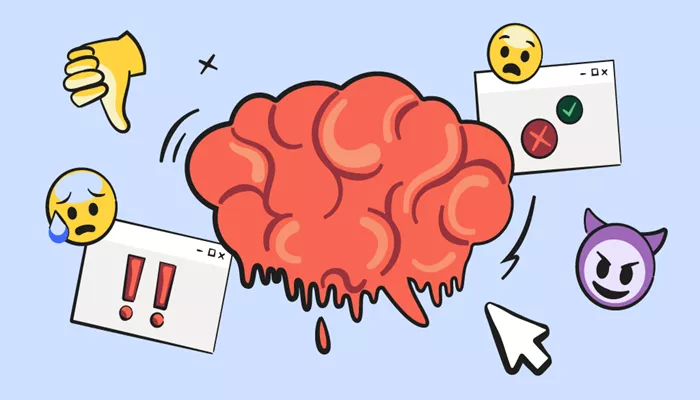Last year, Oxford University Press named “brain rot” its 2024 Word of the Year, describing it as the mental decline caused by overconsumption of trivial or unchallenging online content, especially on social media platforms. This phenomenon is often likened to junk food for the brain, according to Dr. Andreana Benitez, a neurology associate professor at the Medical University of South Carolina.
While the term is widely used, scientific consensus on whether such content truly harms the brain remains limited. The Centers for Disease Control and Prevention (CDC) reports that half of U.S. teenagers spend four or more hours daily on screens, with adults averaging over six hours globally. However, no federal guidelines currently define safe screen time limits for teens or adults.
Emerging research links heavy screen use to mental health challenges. Approximately 25% of frequent teenage scrollers report anxiety or depression, and studies suggest that adolescents with higher screen time are more prone to disorders such as depression, anxiety, ADHD, and physical symptoms like dizziness or nausea. These findings come from the 2024 Adolescent Brain Cognitive Development study, the largest long-term brain development research in the U.S..
Brain rot is associated with emotional desensitization, cognitive overload, negative self-worth, and impaired executive functions such as memory, planning, and decision-making. Digital behaviors like doomscrolling and social media addiction exacerbate these effects by creating dopamine-driven feedback loops that increase cognitive fatigue and emotional exhaustion.
Experts emphasize that the issue is not only the quantity of screen time but also the quality of content consumed. Dr. Costantino Iadecola of Weill Cornell Medical Center explains that excessive screen use reduces time spent on physical activity and face-to-face interactions, which are crucial for developing brains. Artificial digital interactions lack the complex verbal, sensory, and emotional stimuli necessary for healthy brain development.
To mitigate brain rot, specialists recommend mindful technology use, including limiting screen time, curating digital content to avoid low-quality material, and engaging in non-digital activities that promote cognitive resilience and emotional well-being. These strategies are especially vital for adolescents and young adults, whose brains are still maturing and are more vulnerable to digital overstimulation.
As digital engagement continues to rise, raising awareness and developing effective interventions is critical for safeguarding mental health and cognitive function in younger generations. Policymakers, educators, caregivers, and health professionals must collaborate to promote balanced media consumption and internet literacy to counteract the pervasive effects of brain rot.


